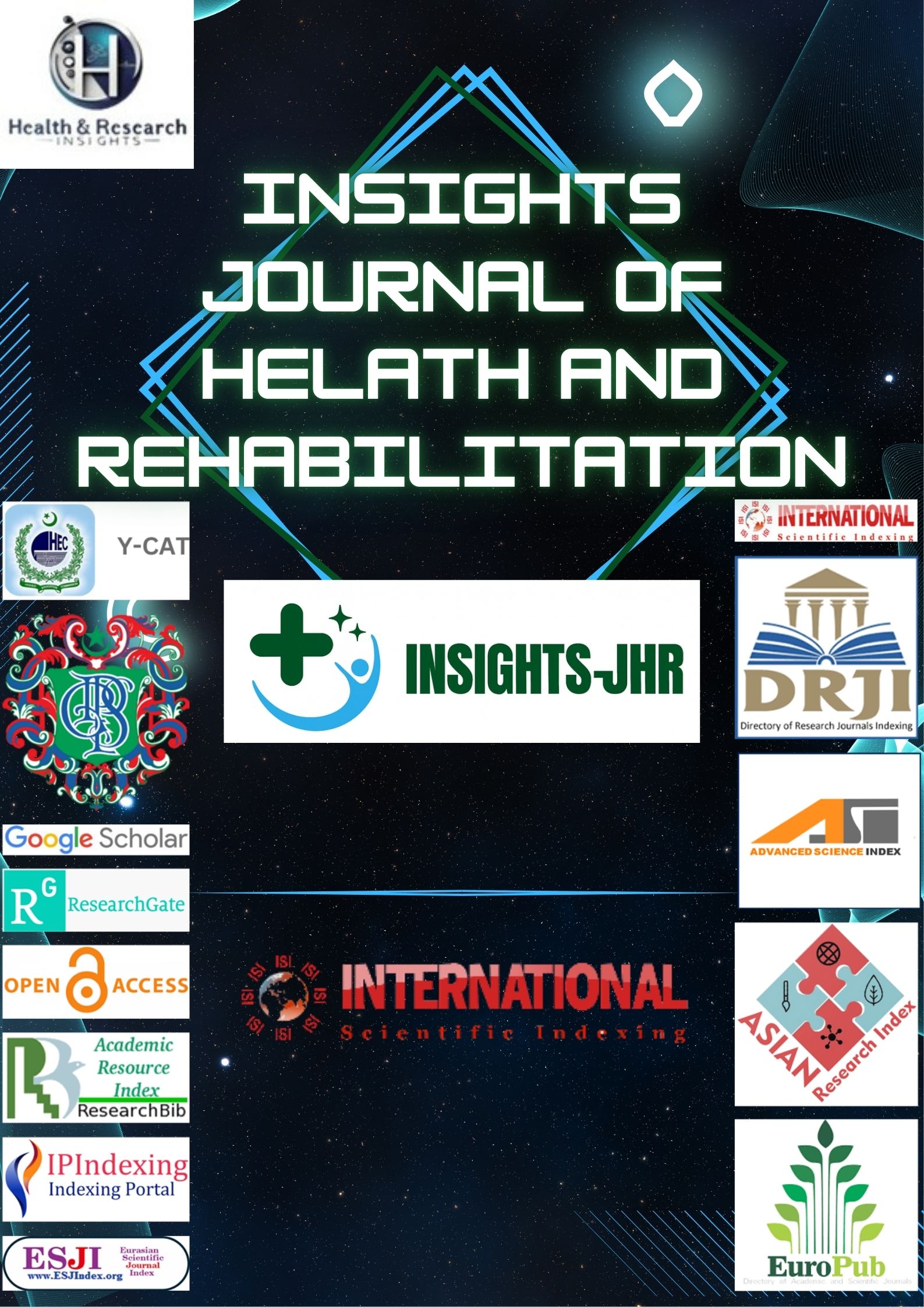ADVANCED FOOD CHEMISTRY — A NARRATIVE REVIEW
DOI:
https://doi.org/10.71000/fx4bzq02Keywords:
Maillard reaction, advanced glycation end products (AGEs), , lipid oxidation, foodomics, , high resolution mass spectrometry (HRMS), , non-thermal processingAbstract
Background: The chemistry of food processing governs both the sensory appeal and safety of what we consume. While reactions like the Maillard process and lipid oxidation contribute to desirable flavors and textures, they are also responsible for generating compounds with potential toxicological significance, such as advanced glycation end products (AGEs) and reactive aldehydes. Simultaneously, emerging non-thermal technologies and high-resolution analytical techniques are transforming how these processes are monitored and optimized.
Objective: This narrative review aims to consolidate recent advancements (2022–2025) in the chemical, analytical, and technological dimensions of food processing, with an emphasis on flavor development, safety, and nutritional quality.
Main Discussion Points: The review is structured around five thematic domains: (i) the mechanistic formation and dietary implications of Maillard reaction products and AGEs; (ii) lipid oxidation and its interplay with protein degradation; (iii) non-thermal processing techniques such as cold plasma and pulsed electric fields (PEF), and their molecular impacts; (iv) foodomics and the application of high-resolution mass spectrometry (HRMS) for targeted, suspect, and non-targeted screening; and (v) flavor chemistry, with a focus on advanced analytical tools including GC×GC-MS, PTR-ToF-MS, and chemometrics. Each section offers mechanistic insights, typical concentration ranges, analytical best practices, and practical decision-making frameworks.
Conclusion: The integration of advanced processing technologies with robust analytical workflows presents new opportunities to balance sensory quality with safety. However, standardized methodologies and real-world validation are essential to translate laboratory findings into applied food systems.
References
Yang, S., & Sun, M. (2024). Recent advanced methods for extracting and analyzing cannabinoids from cannabis-infused edibles and detecting hemp-derived contaminants in food (2013–2023): A comprehensive review. Journal of Agricultural and Food Chemistry, 72(23), 6347–6364.
Sha, L., et al. (2023). Recent advances in the processing and manufacturing of plant-based meat. Journal of Agricultural and Food Chemistry, 71(1), 5–16.
Pan, Z., et al. (2025). Structure and bioactivities of soybean-derived peptide lunasin: A review. Food Chemistry, 485, 137023.
Ma, Y., et al. (2025). Functions and applications of furan fatty acids: A review. Food Chemistry, 485, 137015.
Zhang, L., et al. (2025). Strategies for glucosinolate-derivative preparation: A review. Food Chemistry, 485, 137012.
Li, X., et al. (2025). Plant-derived antioxidants for enhancing edible oil stability: A review. Food Chemistry, 485, 137017.
Chen, Y., et al. (2025). Chemical components and health impacts of Kuding tea: A review. Food Chemistry, 485, 137019.
Wang, H., et al. (2025). Enhancing hydrophobicity of biopolymer edible packaging: A review. Food Chemistry, 485, 137021.
Li, J., et al. (2025). Emerging deep eutectic solvents for food waste valorization. Food Chemistry, 462, 135256.
Xu, Z., et al. (2025). Advances in sulfur quantum dots for food safety detection. Food Chemistry, 463, 135300.
Liu, R., et al. (2025). Differences between vitexin and isovitexin: Extraction, chemistry, and bioactivity. Food Chemistry, 485, 137010.
Peng, Y., et al. (2025). Decoding polyphenol-protein interactions with deep learning. arXiv preprint arXiv:2508.03456.
Ruan, Y., et al. (2025). FlavorDiffusion: Predicting food pairings using diffusion models. arXiv preprint arXiv:2502.06871.
Mehta, V., et al. (2024). Advancement of metal oxide nanomaterials on agri-food fronts. arXiv preprint arXiv:2407.19776.
Wu, X., et al. (2022). Protein–polysaccharide interactions in food formulations. arXiv preprint arXiv:2201.09250.
Fennema, O. R., et al. (2021). Fennema’s Food Chemistry (5th ed.). CRC Press.
Dickinson, E. (2020). Strategies to control and inhibit the flocculation of protein-stabilized emulsions. Food Hydrocolloids, 100, 105–117.
Ahmed, J., et al. (2021). Rheological and structural properties of food polysaccharides. Carbohydrate Polymers, 256, 117479.
Yuan H, Xu Y, Luo Y, Zhang JR, Zhu XX, Xiao JH. Ganoderic acid D prevents oxidative stress-induced senescence by targeting 14-3-3ε to activate CaM/CaMKII/NRF2 signaling pathway in mesenchymal stem cells. Aging Cell. 2022;21(9):e13686.
Cojic M, Kocic R, Klisic A, Kocic G. The Effects of Vitamin D Supplementation on Metabolic and Oxidative Stress Markers in Patients With Type 2 Diabetes: A 6-Month Follow Up Randomized Controlled Study. Front Endocrinol (Lausanne). 2021;12:610893.
Laganà M, Piticchio T, Alibrandi A, Le Moli R, Pallotti F, Campennì A, et al. Effects of Dietary Habits on Markers of Oxidative Stress in Subjects with Hashimoto's Thyroiditis: Comparison Between the Mediterranean Diet and a Gluten-Free Diet. Nutrients. 2025;17(2).
Mori Y, Terasaki M, Osaka N, Fujikawa T, Yashima H, Saito T, et al. DNA Aptamer Raised against Advanced Glycation End Products Improves Sperm Concentration, Motility, and Viability by Suppressing Receptors for Advanced Glycation End Product-Induced Oxidative Stress and Inflammation in the Testes of Diabetic Mice. Int J Mol Sci. 2024;25(11).
Hussain A, Ashique S, Afzal O, Altamimi MA, Malik A, Kumar S, et al. A correlation between oxidative stress and diabetic retinopathy: An updated review. Exp Eye Res. 2023;236:109650.
Wysham C, Shubrook J. Beta-cell failure in type 2 diabetes: mechanisms, markers, and clinical implications. Postgrad Med. 2020;132(8):676-86.
Papachristoforou E, Lambadiari V, Maratou E, Makrilakis K. Association of Glycemic Indices (Hyperglycemia, Glucose Variability, and Hypoglycemia) with Oxidative Stress and Diabetic Complications. J Diabetes Res. 2020;2020:7489795.
Pandolfo G, Genovese G, Bruno A, Campolo D, Tigano V, Cristani M, et al. Advanced glycation end-products and advanced oxidation protein products in schizophrenia. Psychiatry Res. 2022;311:114527.
Downloads
Published
Issue
Section
License
Copyright (c) 2025 Muhammad Usama Aslam, Esha Aslam, Muhammad Shahbaz (Author)

This work is licensed under a Creative Commons Attribution-NonCommercial-NoDerivatives 4.0 International License.







